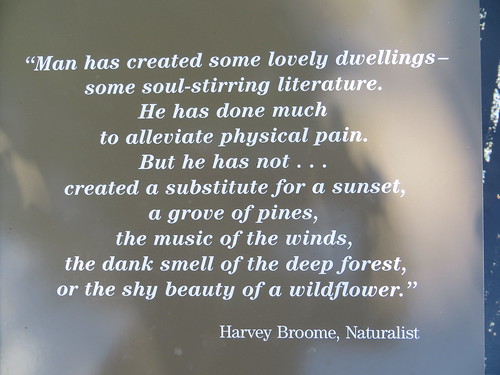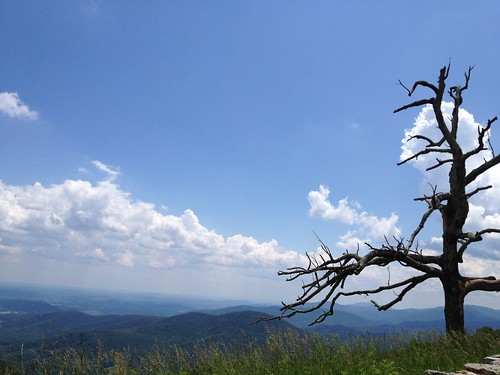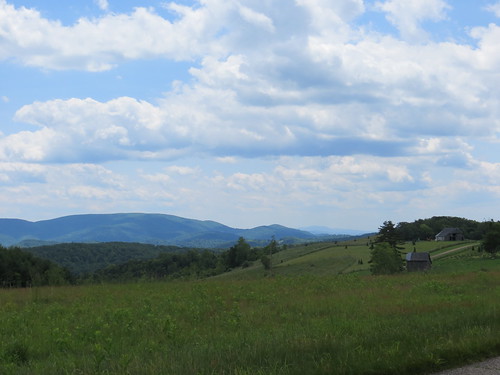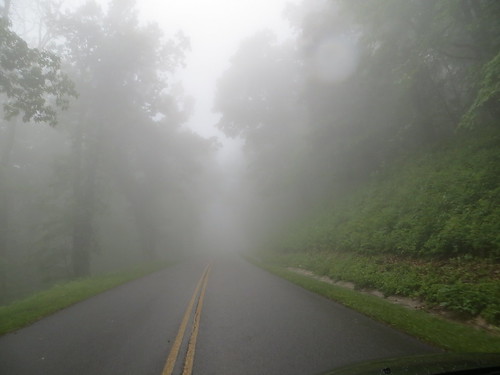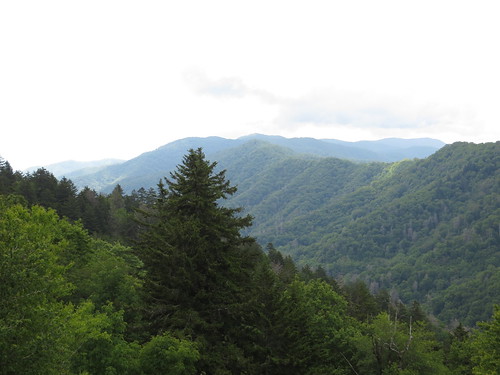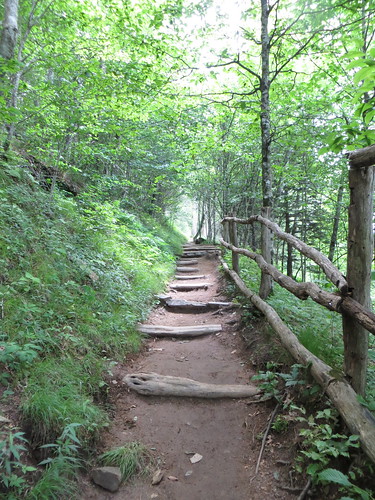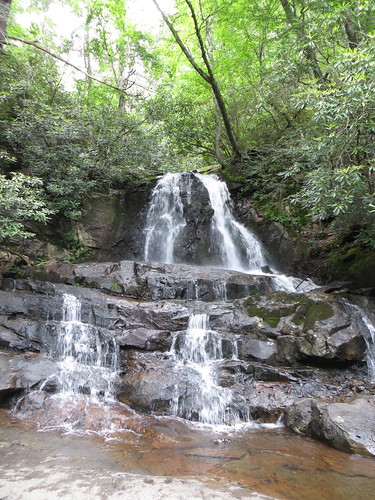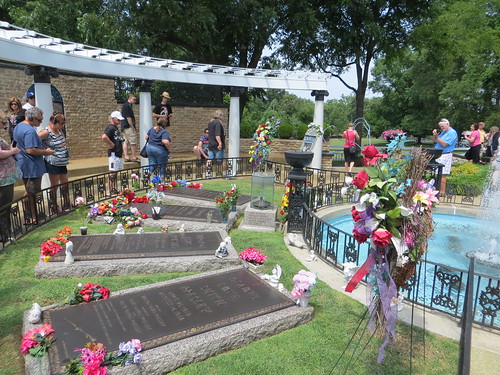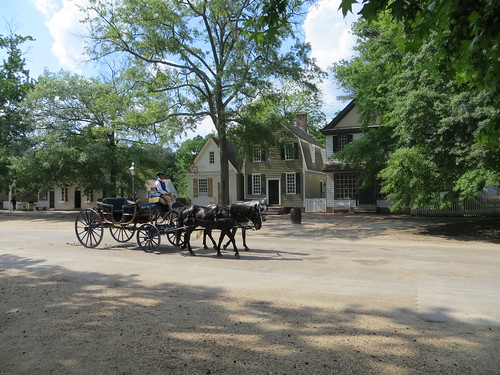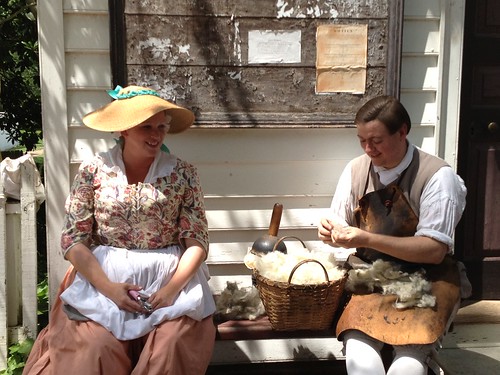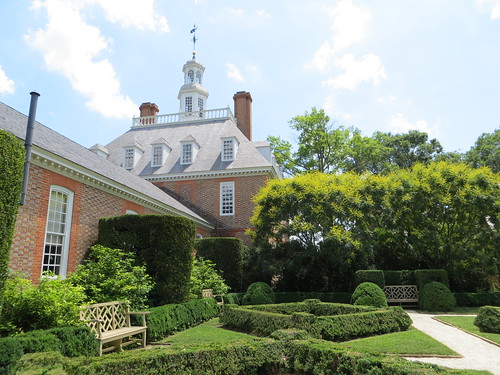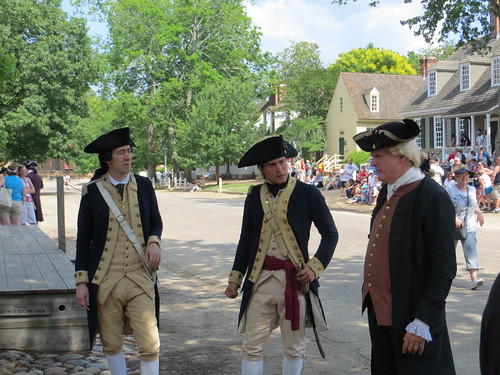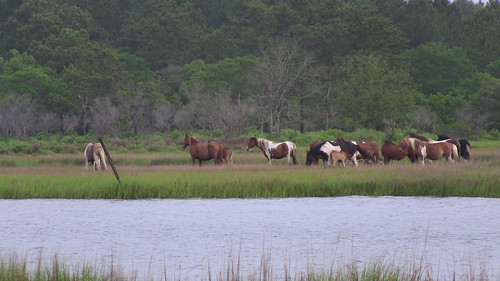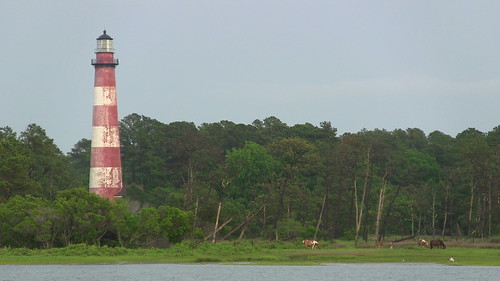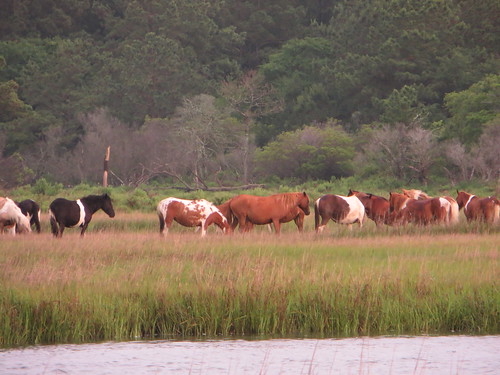Saturday, June 16, 2012
My version of an Appalachian Trail
The Southern Appalachian Mountains are some of the oldest and most beautiful mountains in the USA, and some of the most accessible. You can drive down the spine of the range as it winds 105 miles through the Shenandoah National Park in Virginia.
It takes over three hours to make it from the entrance at Front Royal to the exit at Rockfish Gap, but I strapped a camera onto the front of the car and sped up the footage so you experience the entire Skyline Drive for yourself if you so desire in less than 9 minutes below. I would just make sure you click on the flower/cog thing at the bottom of the video player and change the quality to HD so the video isn't all weird and pixelated.
At the foot of the Skyline Drive is the start of another beautiful drive through the mountains, the Blue Ridge Parkway. It stretches all the way into North Carolina, but I only experienced it in Virginia. First? When my GPS told me that Washington and Lee University was on the Parkway at this address:
Then, after I went to the REAL University in Lexington, VA, I tried to get back on the Blue Ridge Parkway but it looked like this:
After that, I gave up on the Parkway and instead made a beeline for where it ends, in the Great Smoky National Park that straddles North Carolina and Tennessee.
The Cherokees described these mountains "shaconage", meaning "blue, like smoke" for the haze that hangs in the valleys and creeps up the slopes. During the Depression, FDR commissioned a road through the park, providing much needed jobs and some of the most beautiful views in this area. The actual Appalchian Trail even crosses right over the road, following the dividing line between North Carolina and Tennessee.
On the Tennessee side of the park, I went for another lovely drive along the river to the Laurel Falls hiking trail. This sojourn was much shorter though, only about half an hour, or 30 seconds in fast-motion (again, click the flower/cog thing to see HD video).
At the end of the 1.2 mile trail leading up from where I stopped was a gorgeous set of waterfalls. Laurel Falls is such a popular hike, the park service has paved the trail. But it was well worth a visit to not only drive, but to walk through part of the lovely South Appalachian Mountains.
Thursday, June 14, 2012
Lifestyles of the Rich and Famous
In just one week, I toured three of the most visited homes in the United States, all of which belonged to extremely wealthy and powerful men.
My first stop was just outside of Charlottesville, Virginia at the home Monticello, the home of President and amateur architect Thomas Jefferson. He spent forty years of his life (from 1769 to 1809) tinkering with this building, and the result is a beautiful and quirky house with such details as an annex bed bridging Jefferson's sitting room and his study so he could roll out of bed into either room, a french door that operates on a pulley system under the floor, a huge dome and numerous skylights, and an octagonal guest room (he just liked the shape).
Unfortunately, you aren't allowed to take photos inside the house, only outside in the equally charming gardens. But you can see a glimpse of each room on display by clicking through the floorplan here.
My second stop was the polar opposite of Monticello. Biltmore was the brainchild of George Washington Vanderbilt III. He, along with architect Richard Morris Hunt, trolled Europe looking for inspiration (and antiques), then built this mansion just outside of Asheville, North Carolina from 1889 to 1895. It has a staggering 225 rooms, including 43 bathrooms, and an indoor swimming pool, and one of the country's first private bowling alleys. Rooms like the banquet hall are jaw-droppingly huge and dripping with luxurious artifacts such as 16th century Flemish tapestries and Napoleaon's chess set. The house was modelled on the great French chateaux, but it struck me as faux and even noveau riche; a wealthy American mimicking European royalty. Whereas Monticello incorporated European design and often improved on it in a uniquely American way, Biltmore seemed to be a straight-up imitation, a Gilded Age monstrosity designed by a man with too much money and too little originality. But it is still a seriously impressive sight, if only for the sheer size of it. Just touring the house takes at least an hour and a half, then the gardens, another few hours. They were beautifully designed by Frederick Law Olmstead, the landscape genius behind Central Park.
The only thing that Biltmore does have in common with Monticello? The fact that visitors can't take photos inside. You can see a selection of some of the rooms here though.
And finally, how could I travel through this country without visiting the home of an actual American King? My third stop was at Elvis Presley's Graceland in Memphis Tennessee. Unlike the other two houses, you CAN take pictures inside, which is fortunate because while the outside looks like a fairly typical wealthy home, the inside is something else entirely. It is a truly stunning example of 70's hedonism, done in the tackiest possible way and all squeezed into a house that isn't that much bigger than your average McMansion today.
And while Evis may have left the building, he's still on the premises. The King and his parents and grandmother are all buried in the backyard.
 |
| Monticello |
 |
| Gardens at Monticello |
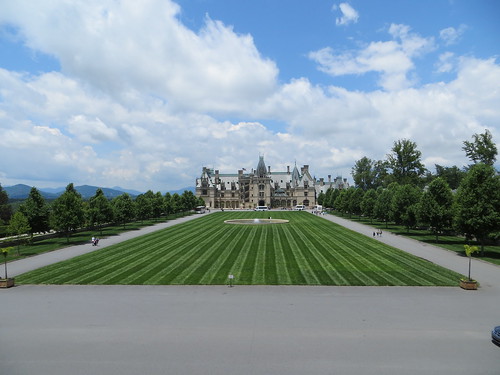 |
| Biltmore |
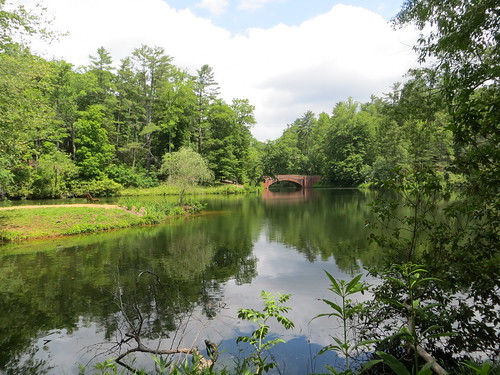 |
| Gardens at Biltmore |
 |
| Graceland |
And finally, how could I travel through this country without visiting the home of an actual American King? My third stop was at Elvis Presley's Graceland in Memphis Tennessee. Unlike the other two houses, you CAN take pictures inside, which is fortunate because while the outside looks like a fairly typical wealthy home, the inside is something else entirely. It is a truly stunning example of 70's hedonism, done in the tackiest possible way and all squeezed into a house that isn't that much bigger than your average McMansion today.
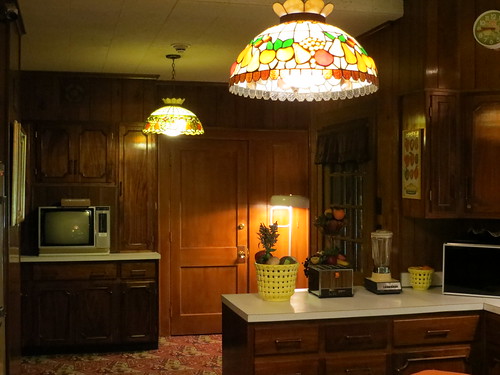 |
| Kitchen |
 |
| TV room |
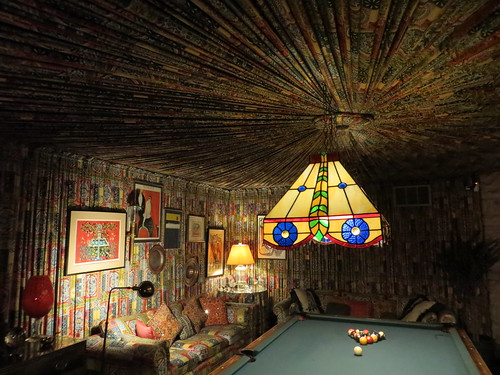 |
| Pool Room |
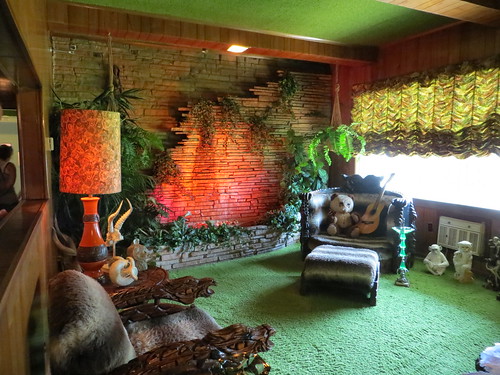 |
| Jungle Room |
And while Evis may have left the building, he's still on the premises. The King and his parents and grandmother are all buried in the backyard.
Tuesday, June 12, 2012
That Brave and Fallen Few
While I was visiting colonial Williamsburg, I learned an interesting fact. When the framers of the Virginia Declaration of Rights were drawing up that document, which was used as the basis for the Declaration of Independence and the Bill of Rights, they struggled over the very first clause - "That all men are by nature equally free and independent". Half of the men of Williamsburg were slaves, many owned by the very same men who were sitting in that room, enshrining equality into their state law. According to my guide, the framers managed to include the equality phrase without freeing their slaves by deciding that because slaves could never own property, they essentially did not qualify as "men".
To me, it has always been one of the amazing strengths of this country, that it has equality and freedom enshrined in its laws, and one of this country's biggest struggles, making that law an actual reality. And the dichotomy of holding men as slaves, while proclaiming every man's right to freedom, was a massive flaw in the founding of the country that was going to have to be resolved at some point.
When that unresolved contradiction dovetailed with another unresolved matter, how much autonomy an individual state has from the federal government, civil war ensued. Not even a century after declaring independence, hundreds of thousands of young men, the exact numbers are still unknown, lost their lives in incredibly bloody battles across the country. And when it was all over, the united states became the United States, and slavery was illegal.
Visiting some of the battlefields where the battles occurred is a moving experience. At Gettysburg, the bloodiest battle of the Civil War which claimed 51,000 casualties, the rolling greens hills are bucolic. Only the stone monuments and the markers bear testament to the inconceivable amount of carnage that occurred outside this small town in Pennsylvania.
It's the same feeling in Shiloh, Tennessee, where nearly 24,000 men died. The scenery is stunning, the tranquility palpable, and it is very hard to imagine the dirt and gunpowder and carnage and blood that covered these beautiful fields.
But a closer look shows that it is all, literally, buried under the surface. As in Gettysburg, Union soldiers were buried in the cemetery at Shiloh, with many of the graves simply labelled Unknown.
But the Confederate soldiers have no individual graves. Their bodies were piled into mass graves in ditches around the battlefield and left unacknowledged until the Daughters of the Confederacy put up markers at the known burial locations.
The central issues that led, it seems inevitably with hindsight, to the Civil War are still somewhat unresolved today. States still wrangle for power with the federal government (most notably right now, Florida versus the Obama administration), and equality is still more dream than reality. But visiting these important sites from the Civil War served as an important reminder to me of some the terrible price already paid in this young country's progress.
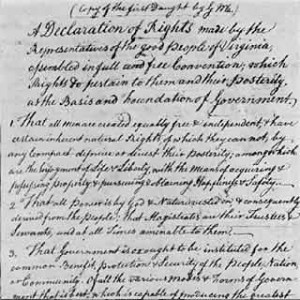 |
| Virginia Declaration of Rights |
To me, it has always been one of the amazing strengths of this country, that it has equality and freedom enshrined in its laws, and one of this country's biggest struggles, making that law an actual reality. And the dichotomy of holding men as slaves, while proclaiming every man's right to freedom, was a massive flaw in the founding of the country that was going to have to be resolved at some point.
When that unresolved contradiction dovetailed with another unresolved matter, how much autonomy an individual state has from the federal government, civil war ensued. Not even a century after declaring independence, hundreds of thousands of young men, the exact numbers are still unknown, lost their lives in incredibly bloody battles across the country. And when it was all over, the united states became the United States, and slavery was illegal.
 |
| Gettysburg, PA |
Visiting some of the battlefields where the battles occurred is a moving experience. At Gettysburg, the bloodiest battle of the Civil War which claimed 51,000 casualties, the rolling greens hills are bucolic. Only the stone monuments and the markers bear testament to the inconceivable amount of carnage that occurred outside this small town in Pennsylvania.
 |
| 4,000 men died in this spot |
It's the same feeling in Shiloh, Tennessee, where nearly 24,000 men died. The scenery is stunning, the tranquility palpable, and it is very hard to imagine the dirt and gunpowder and carnage and blood that covered these beautiful fields.
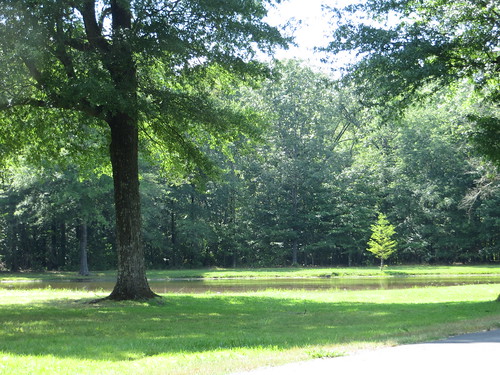 |
| Shiloh, TN |
But a closer look shows that it is all, literally, buried under the surface. As in Gettysburg, Union soldiers were buried in the cemetery at Shiloh, with many of the graves simply labelled Unknown.
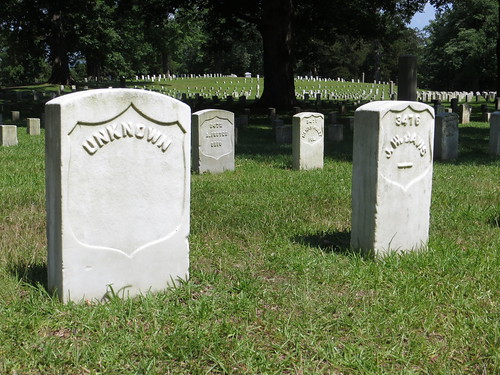 |
| Union graves |
But the Confederate soldiers have no individual graves. Their bodies were piled into mass graves in ditches around the battlefield and left unacknowledged until the Daughters of the Confederacy put up markers at the known burial locations.
 |
| Confederate mass grave |
The central issues that led, it seems inevitably with hindsight, to the Civil War are still somewhat unresolved today. States still wrangle for power with the federal government (most notably right now, Florida versus the Obama administration), and equality is still more dream than reality. But visiting these important sites from the Civil War served as an important reminder to me of some the terrible price already paid in this young country's progress.
Tuesday, June 5, 2012
The Other Williamsburg
Unlike my neighborhood, there were no ironic tattoos or skinny jeans.
But there WERE plenty of funky wigs and some seriously vintage clothing.
Colonial Williamsburg, 301 acres of "living history" museum, is an impressive undertaking by any standard. The city, named for William III, used to be the center of British rule in Virginia, and much of what used to be here in the 18th century has been painstakingly rebuilt on the original foundations. I only had a few hours for the site, but you could spend days wandering around all the various buildings. Among the chief attractions? The reconstructed Capitol and the reconstructed Governor's Palace, both of which are only accessible through a guided tour.
Everybody working inside the complex stays in historical character as much as possible, no small task given how different 2012 is to 1775. For example, I was asked for my mark of credit instead of a credit card at a gift shop and when I inquired after the bathroom at Chowning's tavern, I was informed there was no bath on the premises but there was a room of rest up the stairs. I was also gently teased for my British accent and one character asked if I visited often with His Majesty King George III.
The site also puts on several performances depicting parts of American history. My own trip was topped off with a splendidly OTT reenactment of the moment when the good citizens of Williamsburg received word of the battles of Lexington and Concord. Here's how it started:
But there WERE plenty of funky wigs and some seriously vintage clothing.
Colonial Williamsburg, 301 acres of "living history" museum, is an impressive undertaking by any standard. The city, named for William III, used to be the center of British rule in Virginia, and much of what used to be here in the 18th century has been painstakingly rebuilt on the original foundations. I only had a few hours for the site, but you could spend days wandering around all the various buildings. Among the chief attractions? The reconstructed Capitol and the reconstructed Governor's Palace, both of which are only accessible through a guided tour.
Everybody working inside the complex stays in historical character as much as possible, no small task given how different 2012 is to 1775. For example, I was asked for my mark of credit instead of a credit card at a gift shop and when I inquired after the bathroom at Chowning's tavern, I was informed there was no bath on the premises but there was a room of rest up the stairs. I was also gently teased for my British accent and one character asked if I visited often with His Majesty King George III.
The site also puts on several performances depicting parts of American history. My own trip was topped off with a splendidly OTT reenactment of the moment when the good citizens of Williamsburg received word of the battles of Lexington and Concord. Here's how it started:
Monday, June 4, 2012
Couldn't drag me away
When I was a child, one of my favorite books was "Misty of Chincoteague". Written in 1947 by Marguerite Henry, the eponymous Misty was a wild foal from the Virginia side of Assateague Island. The wild ponies are actually feral horses, who have lived on the island for centuries. Every year, in order to keep the herd healthy, firefighters from the nearby island of Chincoteague head over to Assateague, corral the entire horse population into the water, and make them swim across the inlet for an auction. The remaining horses are then returned to the wild for another year.
I've always wanted to see the wild ponies for myself, ever since I was little and reading about them in London. So it was my first destination on this road trip. I left New York City around 10:30 in the morning, and after charging south on the New Jersey turnpike, I decided to take a more scenic and leisurely trip alone Delaware's coast towards Virginia. Delaware is famous for its gorgeous beaches, but it was pouring rain when I rolled up to Rehoboth beach for a quick break. So instead of the beach, I wolfed down a delicious plate of happy hour oysters ($14 for a dozen!) at the Henlopen City Oyster House and headed back on the road.
Around 5:30pm, I arrived in rainy Chincoteague and checked in at the perfectly decent Rodeway Inn. Fortunately, the clouds cleared in time for a sunset cruise with Captain Mark and the Assateague Explorer. From the boat, we could clearly see several groups of the famous horses in the distance. They won't be corralled and sold until July, so this was a great time of year to see entire families intact.
After that, there was nothing more to do but enjoy the sunset which was fortunately mosquito-free. During the day? They are everywhere, especially at the wildlife refuge trails on Assateague Island. I went for a ten minute walk around the lighthouse the next morning, wearing 99% deet insect repellent and still got eaten alive. I much preferred being on the water, to being on the land!
On the road again...
After a much-needed month back home in New York City, I'm now back on the open highway - this time, in North America. I've got 99 days and a rented Ford Focus and I'm going to try and see as much of my chosen home country as possible. Wish me luck!
Subscribe to:
Posts (Atom)
